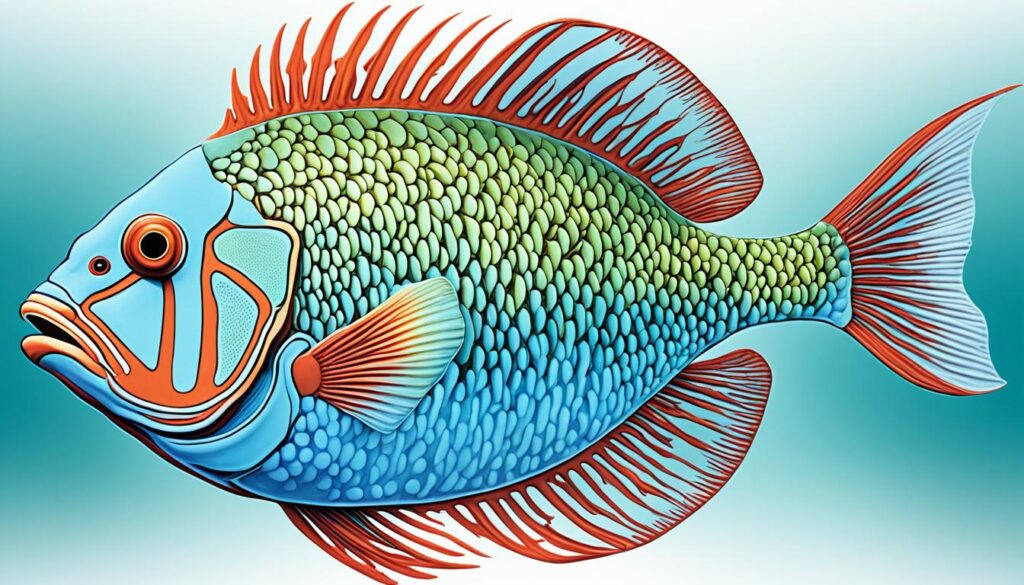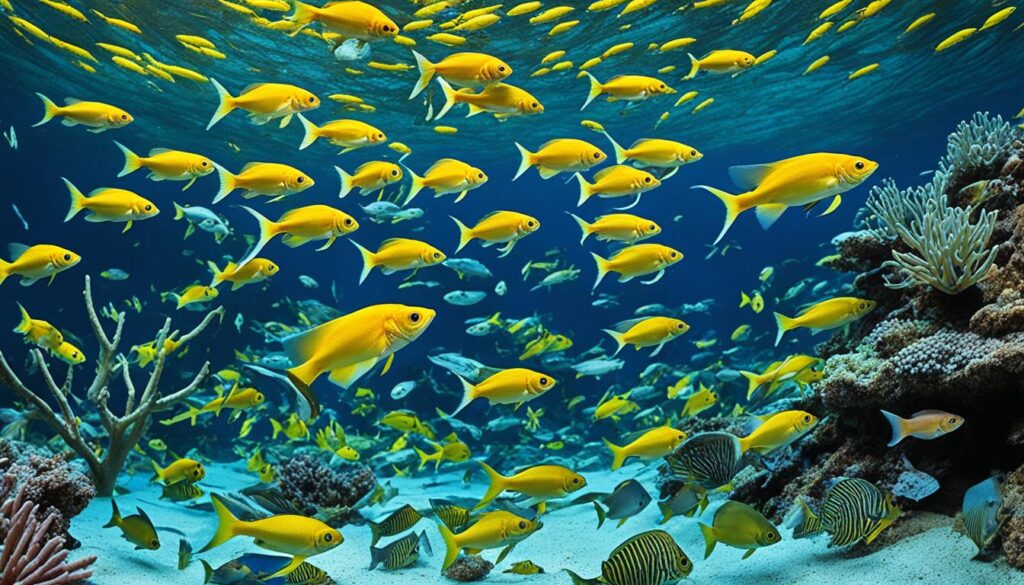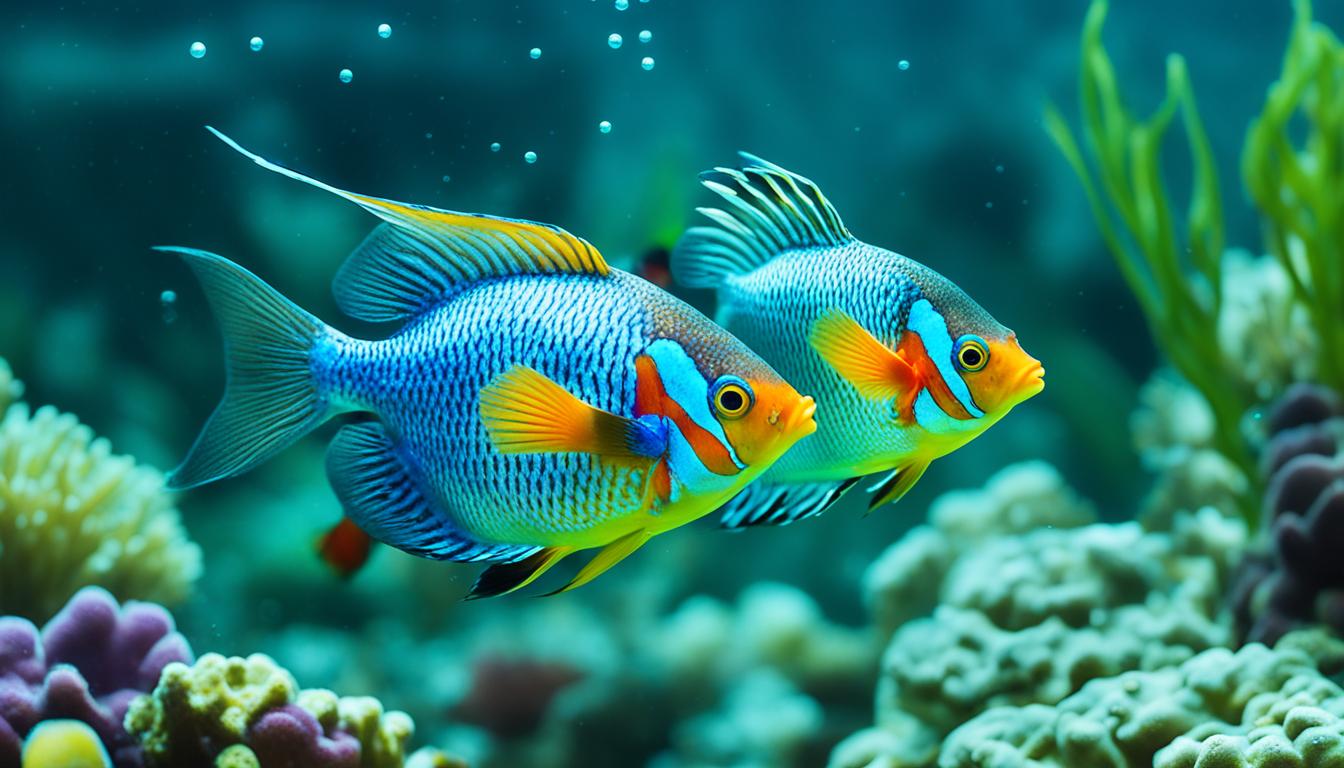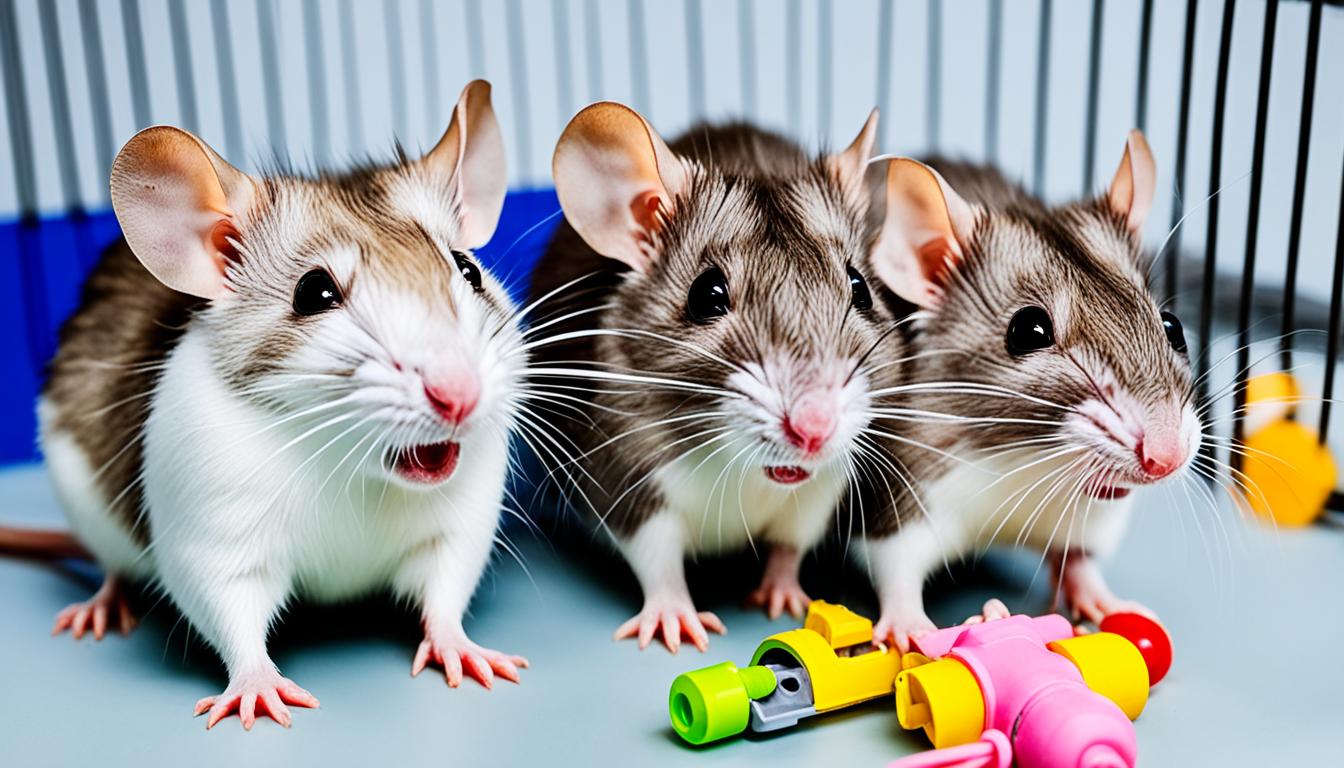Did you realize that there are over 32,000 known species of fish, each with their own unique reproductive anatomy and mating behaviors? From external fertilization to internal fertilization, fish have developed a variety of strategies to ensure the survival of their species. Join us as we explore the world of fish reproduction and reveal the mysteries of marine mating rituals.
Key Takeaways
- Fish reproduction is incredibly diverse, with over 32,000 species each exhibiting unique mating behaviors.
- Fish can reproduce through external fertilization, internal fertilization, mouthbrooding, ovoviviparity, or viviparity.
- Mating strategies among fish include promiscuity, polygamy, monogamy, and hermaphroditism.
- Fish reach sexual maturity at different ages, and their spawning frequency varies greatly.
- Understanding fish reproduction is crucial for conservation efforts and maintaining the biodiversity of marine ecosystems.
The Reproductive Anatomy of Fish
Fish have reproductive anatomy similar to other vertebrates. Most fish species have separate sexes, with males having testes and females having ovaries. However, some fish are hermaphrodites and possess both male and female reproductive organs. Fish reproduction requires the fusion of eggs and sperm, and there are various ways in which this can occur. Understanding the reproductive anatomy of fish is essential in unraveling the mysteries of their mating habits.

| Fish Reproductive Anatomy | Description |
|---|---|
| Male reproductive organs | Testes |
| Female reproductive organs | Ovaries |
| Hermaphrodite fish | Have both male and female reproductive organs |
The reproductive anatomy of fish plays a crucial role in their ability to reproduce and pass on their genetic material. Males produce sperm in their testes, while females produce eggs in their ovaries. The sperm and eggs are released during the process of spawning, where they come into contact and fertilization occurs. This fusion of gametes leads to the development of new individuals.
Different Ways in Which Fish Mate
Fish employ various strategies and behaviors when it comes to mating, showcasing the incredible diversity in their reproductive methods. Understanding these different mating methods is key to appreciating the complexity of fish reproduction.
1. External Fertilization: Oviparous fish, such as salmon and trout, lay their eggs in the water. Males release sperm over the eggs, fertilizing them externally. This method allows for a large number of eggs to be produced, increasing the chances of successful reproduction.
2. Mouthbrooding: Some fish species, like certain cichlids and gobies, practice mouthbrooding. In this behavior, the female carries the fertilized eggs in her mouth until they hatch. Mouthbrooding provides better protection for the developing embryos, as the female can keep them safe from predators.
3. Internal Fertilization: Fish that practice internal fertilization, such as many species of sharks and rays, have specialized reproductive organs. Males use claspers to transfer sperm into the female’s reproductive tract. This method ensures direct fertilization and increases the chances of successful reproduction.
4. Ovoviviparity and Viviparity: There are fish species that carry their eggs or embryos inside their bodies until they give live birth. Ovoviviparous fish retain the fertilized eggs, while viviparous fish provide nutrients to the developing embryos through a placenta-like structure. This reproductive strategy provides added protection and increases the chances of survival for the offspring.
By examining the various mating behaviors and reproductive strategies of fish, we gain a deeper understanding of their remarkable adaptation to different environments and ecological niches.
Exploring the Intricate World of Fish Reproduction
Let us now delve deeper into the fascinating world of fish reproduction and explore the incredible diversity of mating strategies and behaviors.
Mating Strategies and Behaviors
Fish exhibit a wide range of mating strategies and behaviors that contribute to their remarkable diversity. These strategies provide insights into the complexities of fish reproduction and shed light on their unique reproductive adaptations.
Promiscuity is a prevalent mating system in fish, where both males and females engage in breeding with multiple partners. This approach ensures a diverse genetic pool and increases the chances of successful reproduction.
Polygamy, including polygyny (one male with multiple females) and polyandry (one female with multiple males), is another mating strategy observed in fish. This behavior allows certain individuals to dominate mating opportunities and maximize their reproductive success.
While polygamy is common, monogamy is relatively rare in fish. Monogamous mating involves the formation of lifelong pair bonds between partners. This strategy promotes cooperation for tasks such as defending territories or caring for offspring. Some of the few monogamous fish species include the seahorse and the California sheephead.
Some fish take mating strategies to a whole new level with hermaphroditism. These species possess the remarkable ability to produce both eggs and sperm. Depending on the circumstances, hermaphroditic fish can change their sex, ensuring reproductive flexibility and adapting to environmental conditions.
| Mating Strategy | Description |
|---|---|
| Promiscuity | Both males and females mate with multiple partners to increase genetic diversity. |
| Polygamy | Includes polygyny (one male with multiple females) and polyandry (one female with multiple males) for enhanced reproductive success. |
| Monogamy | Forming lifelong pair bonds between partners for cooperative tasks and shared parental care. |
| Hermaphroditism | Ability to change sex or simultaneous production of eggs and sperm, providing reproductive flexibility. |
Fish mating strategies are essential in maintaining species diversity and promoting the survival of different populations. By studying these behaviors, researchers and enthusiasts gain a deeper appreciation for the intricacies of fish reproduction and its role in shaping marine ecosystems.

Sexual Maturity and Spawning Frequency
Understanding the sexual maturity and spawning cycles of fish is crucial for responsible fishing and conservation efforts. The age at which fish reach sexual maturity varies across species, and it is influenced by factors such as size, age, and environmental conditions. Smaller adult fish tend to reach maturity earlier.
Spawning frequency also varies among fish species, with some capable of reproducing multiple times throughout their lives, while others reproduce only once and die shortly after. This information helps us understand the reproductive capabilities and breeding patterns of different fish species.
To illustrate this, let’s take a look at some examples of fish sexual maturity and spawning cycles:
| Fish Species | Sexual Maturity | Spawning Frequency |
|---|---|---|
| Salmon | 3-4 years | Once in their lifetime |
| Clownfish | 6-12 months | Multiple times a year |
| Tuna | 2-5 years | Multiple times a year |
| Guppy | 2-3 months | Continuously throughout their lives |
As you can see, fish species have diverse sexual maturity and spawning patterns. Understanding these factors helps us make informed decisions in managing fish populations and implementing effective conservation measures.

“Understanding the sexual maturity and spawning cycles of fish is crucial for responsible fishing and conservation efforts.”
Protecting Fish Breeding Seasons
By being aware of fish breeding seasons, we can take steps to protect important habitats and ensure the successful reproduction of fish species. Different fish species have specific times of the year when they spawn, and these periods are critical for their survival.
For example, many migratory fish species, such as salmon, undertake long journeys to reach their spawning grounds. Protecting these natural breeding habitats and maintaining healthy river ecosystems is essential for their reproductive success.
Furthermore, regulations and fishing restrictions can be implemented during fish breeding seasons to prevent overfishing and ensure the sustainability of fish populations.
By understanding the sexual maturity, spawning cycles, and fish breeding seasons, we can contribute to the conservation and preservation of fish species for future generations.
Conclusion
Fish reproduction is an intriguing subject characterized by a wide range of mating behaviors, reproductive strategies, and spawning rituals. Exploring how fish mate is not only fascinating for enthusiasts and researchers but also vital for conservation efforts. It allows us to gain a deeper appreciation for the incredible biodiversity and sustainability of marine ecosystems.
Throughout this article, we have delved into the intricacies of fish reproduction, uncovering the various ways in which fish mate. We have learned about their reproductive anatomy, from the separate sexes to the hermaphrodite fish. We have also explored different mating strategies, such as monogamy, polygamy, and promiscuity. Additionally, we have examined the sexual maturity and spawning frequency of fish, shedding light on their breeding habits.
By understanding the secrets of fish reproduction, we can contribute to the conservation and preservation of these remarkable species. It is essential to protect marine reproductive diversity to ensure the continuation of fish populations and the stability of our ecosystems. Let’s continue exploring and appreciating the wonders of marine reproduction, working together to safeguard the future of these fascinating creatures.










